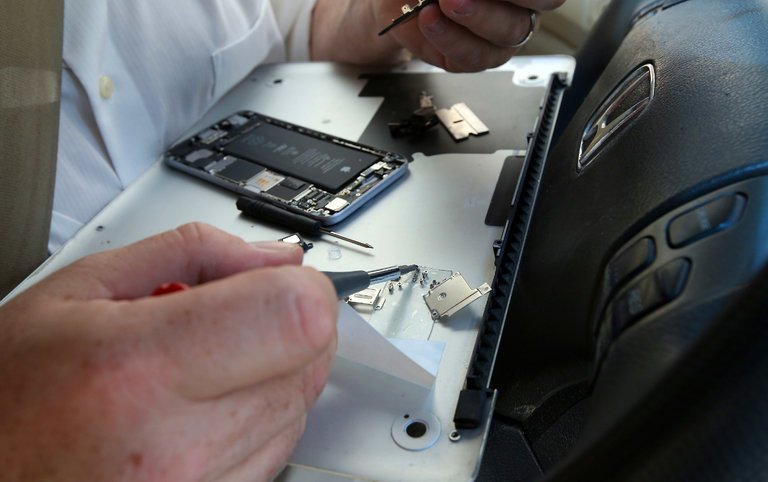When we run into issues regarding technology, many of us don’t bother to dive deep into the details of how it works, but rather, we simply want it fixed. It’s no surprise that we look for the most convenient recommendations for resolving issues or getting the most use out of a gadget. However, most of those suggestions are not true and can actually do more harm than good.

Image courtesy of the New York Times.
Here is a list of fallacies to look out for:
1. Better specs equal better devices
When looking for a new laptop or smartphone, it’s tempting to simply purchase the top model in an effort to get the fastest device that will last the longest. The fastest smartphone doesn’t mean that it will last the longest, just as the computer with the most memory and storage doesn’t mean that it will run faster. Manufacturers depend on consumers thinking this way and that’s why they price models correspondingly.
The top specs don’t guarantee that your phone or computer will work better than one with moderate features. Spending more money on a laptop with the fastest processor doesn’t matter entirely unless you’re doing processor-heavy functions like editing video or encoding music. Purchasing the smartphone with the latest processor also won’t matter as much as features like storage space and camera quality.
In sum, don’t focus on the latest and greatest specs that a device has. If you want a phone that will last all day, pay close attention to the battery. If you want a computer that is easy to travel with, battery life and weight are more crucial than a powerful processor.
2. Wait until your battery is at zero before you recharge it
The myth that users should wait for battery levels to reach zero before plugging it in does have justifiable origins, but those have since been outproven by current technology. Several years ago, nickel-metal hydride (NiMH) and nickel-cadmium (NiCad) were predominant and they experienced an issue called “battery memory,” wherein unless the battery fully depleted before being recharged, it would remember how much power it had used and only charge back up to that amount.
Now, most phones and laptops are equipped with lithium-ion (Li-ion) batteries that don’t suffer from this issue. If you let them die before charging them, you can actually do more harm because they have a limited number of charge cycles before they begin to hold less power. The significant issue in modern batteries is temperature control, so if you can keep it cooler while its charging or in use, you’ll be able to prolong its life.
3. More megapixels equal better cameras
After smaller point-and-shoot cameras became prevalent and larger digital single-lens reflex (DSLR) cameras became more affordable, manufacturers pushed to unveil models with a larger number of megapixels. Consumers then assumed that more megapixels meant they were buying a better camera.
Megapixels do count, as they tell us how powerful a camera’s sensor is, but it doesn’t tell us how good the photos taken by the camera will be. To find that out, it’s more useful to read the reviews or look for examples of photos taken with the phone or camera that you’re searching for and compare them to other popular models or the current one you have. What’s also important to look out for is a camera’s lowlight performance and to get familiar with its options.
4. “Planned obsolescence” is why your phone slows down before a new model is unveiled
Once a year, a new model smartphone comes out and the old one you have begins to run slowly. Whether it starts freezing or the apps that you use become dull, most of us have experienced this right before the new model is unveiled. The idea that this is “planned obsolescence” by a company as a method to force you into upgrading isn’t necessarily accurate.
The true explanation is that it’s a side effect of an evolving and improving industry. When new phones are unveiled, they’re equipped with more memory, improved screens, faster processors, and other specs that, if developers start building their apps around it, can affect your older-model smartphone.
As apps are updated to make use of the features on new devices, they, in turn, slow down older phones. Unless developers pay attention and care enough to make sure that older phones are supported, the issue gets worse over time. However, it’s reassuring knowing that there isn’t a huge conspiracy to get consumers to buy the latest and greatest device.
5. Extended warranty plans are worth the money
Almost any new device that you buy offers an extended warranty. Retailers propose protection programs and service plans that promise that, for a few extra dollars, they will repair or replace your purchase if it’s damaged over the next several years.
However, in many instances, the expensive extended warranty runs parallel to the existing manufacturer’s warranty, meaning you are paying twice for coverage. Additionally, there may be extended warranty protection through the card’s issuer that you may want to check for before.
Source: NYT
Advertisement
Learn more about Electronic Products Magazine





